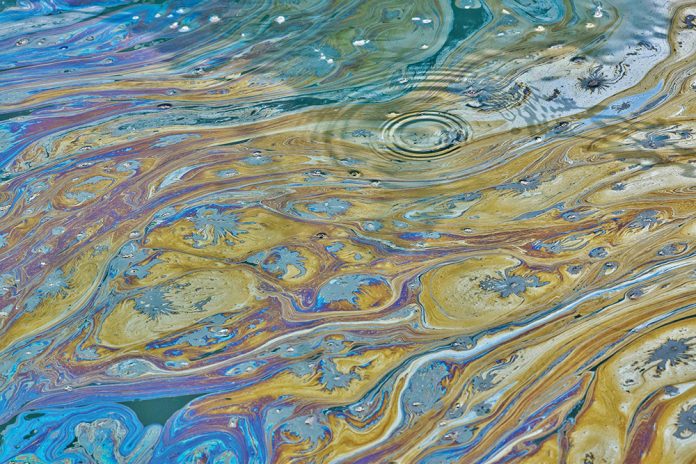Despite widespread interest in finding innovative ways to monitor and remove pollutants and pathogens from wastewater, a significant unmet challenge remains, as Dr Robin Knight, of IN-PART, discusses.
Water is key to a wide range of industrial processes, chemicals and materials production, and agriculture. There are few industrial sectors that do not rely on water in their value chain. Yet many of these processes create polluted wastewater which harms human health and the environment.
Water pollution is a challenge in need of a collaborative solution
IN-PART regularly surveys and consults our network of 6,000 science, engineering and technology companies to understand the unmet R&D needs they are seeking solutions to.
Recent conversations with our industry network – including with water technology companies like De Nora, Evoqua, Hach and Puraffinity, and companies involved in water R&D such as Suez, Veolia, Southern Water, Beko, and AkzoNobel – zeroed in on the fact that water monitoring and treatment was a major unsolved challenge across sectors.
These conversations, which included a series of webinars, uncovered a range of priorities.
The overarching message was a widespread need for new, more accurate, easy-to-use, rapid, continuous flow sensors, and new materials and techniques to remove a wide range of pollutants.
Much talk was about more accurate detection and removal of existing pollutants including particulates, heavy metals, and bacteria. Microplastics, PFAS, and organic pesticides and their derivatives, were also flagged as having a serious unmet need for detection and removal. Concerns were raised about nanoparticles – used in products such as hard-wearing paints and coatings, sunscreens, and self-cleaning windows – where little is known about the health and environmental implications.
What underpinned all of these commercial problems was that the solutions will require finely tuned devices developed by people with a deep understanding of the physical and chemical properties of these pollutants, and advanced analytical techniques. In other words, people in academia.
Uncovering solutions to water treatment from academia
Our Global Challenge campaign was a vindication of this. Having broadly defined the scope of the challenge by surveying the research from academia already uploaded on our matchmaking platform, Connect, we invited the global research community to submit water monitoring and treatment solutions.
In just six weeks we surfaced over 100 innovations from around the world previously unknown to our water industry network. Half (43%) related to the treatment of water for pollutants, 20% to the treatment of water for natural particulates and pathogens (20%) and 17% to the detection of pollutants in water.
Solutions we surfaced included a portable, low-cost, reusable sensor to detect and quantify up to 10 different PFAS molecules (New Jersey Institute of Technology); and robust, inexpensive sorbents to remove PFAS contaminants from water (Suny Research Foundation, NY).
Others included reusable smart filters based on polymeric compounds capable of trapping five of the UK’s most common pesticides, and a plant growth regulator (University of Lincoln). And a technique to capture silver nanoparticles – found in a variety of modern technology, from nanomedical imaging to toothpaste – in replaceable, easy-to-use capsules using a novel ion-exchange method (University of Massachusetts Dartmouth).
These and others have attracted considerable interest from companies looking for water treatment and monitoring solutions (here is a summary of the top 20 water innovations by industry engagement).
The importance of industry-academic partnerships in solving global challenges
We did not create any of these innovations – they have been developed by leading academic researchers in universities across the world. But thanks to the Challenge, we were able to connect those developing the solutions to those who need them. This matchmaking is important if we are to make progress towards solving global problems like water pollution.
Academic researchers all over the world are creating solutions to combat the greatest challenges we face today. But their work sometimes stays locked up in labs or on small local trials, and does not always make it into the hands of the right people working in industry who need the solutions. Similarly, people with the expertise and the research often do not appreciate its full range of potential applications around the world.
Partnerships between academia and industry are not a new thing, but their profile has grown in recent years, and the pandemic in particular showed just how powerful academia-industry collaboration is, through the rapid development of life-saving vaccines.
A partnership between academia and industry is particularly advantageous when there is a problem in need of a complex scientific solution – especially one that involves advanced physical, chemical or biological analyses and an understanding of materials. Researchers bring specialist scientific expertise, industry brings an understanding of real-world need.
This Global Challenge campaign is a testament to this. Through this challenge, we’ve initiated 100 new conversations between industry and academia that otherwise would not have happened. Soon, some of these will turn into collaborations that make a real impact on reducing water pollution and improving water quality worldwide.
Dr Robin Knight is a co-founder of IN-PART, a service that matches research pioneers from academia with decision-makers in industry. The full results of the Challenge are detailed in a white paper published on the campaign alongside a full list of water treatment innovations.



